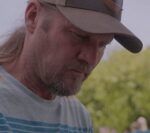One Man’s Quest to Follow Lewis and Clark by Log Raft
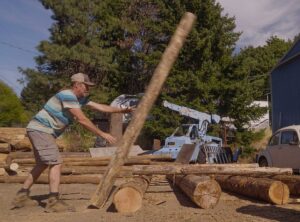 Matt Marx, a White Salmon native, is building something remarkable in his yard. Sections that will become an 1800 square foot log raft. This fall, he plans to assemble those sections above Lewiston, Idaho, and launch on the Snake River. His destination? Fort Clatsop on the Columbia River – the same place Lewis and Clark spent the winter of 1805.
Matt Marx, a White Salmon native, is building something remarkable in his yard. Sections that will become an 1800 square foot log raft. This fall, he plans to assemble those sections above Lewiston, Idaho, and launch on the Snake River. His destination? Fort Clatsop on the Columbia River – the same place Lewis and Clark spent the winter of 1805.
The route covers hundreds of miles through some of the most changed waterways in America. Matt will pass through locks at 8 major dams on the Snake and Columbia rivers. Places Lewis and Clark never imagined would exist. Along the way, he’ll stop at towns and tribal communities. He wants to talk with people about their rivers – what works, what doesn’t, and what’s been lost or gained over two centuries.
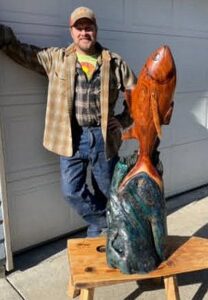
Matt isn’t your typical river adventurer. He’s a local artist and wildland firefighter who splits his time between fighting fires and working with wood. But this project is different. His raft won’t be a simple platform. Matt is building it with sails for when the wind cooperates, teepees for shelter, a cookhouse for meals, and basic facilities for the journey. Everything needed for weeks on the water.
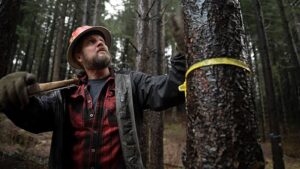
Filming the Modern Rivers
Matt’s project is part historical recreation, part documentary, and part examination of what our rivers have become. Matt plans to document everything with cameras. The footage will become a documentary about today’s Columbia River system. Not just the scenic parts, but the complicated reality. The dams that provide power and navigation also blocked salmon runs that fed people for thousands of years. Towns that depend on river commerce. Water quality issues. Recreation that brings millions of dollars but also has big impacts. Matt says, “I want to show both sides. The rivers aren’t the same as Lewis and Clark saw them. That’s not all bad or all good. It’s just different.”
September Launch
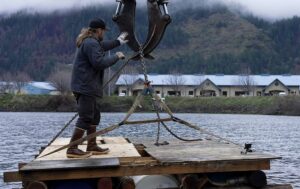 It’s ambitious. Some might call it foolish. But Matt has the skills, the vision, and the commitment to pull it off. If everything goes as planned, Matt will launch in late September when river conditions are right and fire season winds down. The journey could take several weeks depending on weather, dam schedules, and how long he spends in communities along the way.
It’s ambitious. Some might call it foolish. But Matt has the skills, the vision, and the commitment to pull it off. If everything goes as planned, Matt will launch in late September when river conditions are right and fire season winds down. The journey could take several weeks depending on weather, dam schedules, and how long he spends in communities along the way.
A Quest Anyone Can Join
Building and transporting a massive raft isn’t cheap. Neither is the filming equipment or the months away from other work. But Matt thinks it’s worth it. 220 years after Lewis and Clark, someone should look at these rivers again. Really look at them. To play a part in the journey people can follow his progress and contribute at his LewisAndClarkQuest.com website. And for people who care about rivers, history, or just bold adventures, it’s a chance to be part of something unique.
Follow the quest and support Matt’s journey at LewisAndClarkQuest.com

